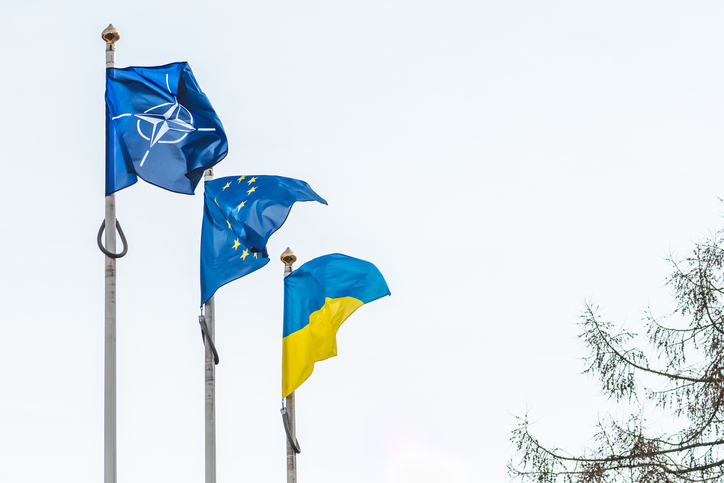European Union economic powerhouses France and Italy carry higher debt-to-GDP ratios than Ukraine, according to new International Monetary Fund (IMF) data.
The body reports that Ukraine Government debt is 109 per cent of GDP this year, below France’s 117 per cent, Italy’s 137 per cent and Greece’s 147 per cent, down from 210 per cent at its peak in 2020.
The debt-to-GDP ratio measures a country’s total public debt relative to the size of its economy, providing an indication of its ability to service or repay that debt.
Ukraine’s debt has risen sharply since 2021, when it was below 50 per cent of GDP, according to the Organisation for Economic Co-operation and Development (OECD).
It has doubled since the start of the Russian invasion, reaching 89.8 per cent of GDP in 2024, according to Ukraine’s Ministry of Finance and hitting almost 110 per cent today.
Yet as Ukraine struggles, some of Europe’s largest economies are deeper in the red.
“The high debt in France is the result of structurally high government spending over many years, not a sudden shock from the war in Ukraine,” ING Belgium economist Ruben Dewitte told Brussels Signal today.
“The deficit has been around 5.4 to 5.8 per cent of GDP recently, pushing debt from 94.2 per cent in 2014 to 113.2 per cent in 2024. With planned defence increases, controlling this debt will be even harder,” he said.
Christofer Govaerts, chief strategist at Belgian bank Nagelmackers, said today: “France’s 10-year bond yields now exceed those of Belgium, Italy, and Greece, reflecting concern over political instability and unresolved budgetary problems.”
Other major economies, including the US at 125 per cent, Japan at 230 per cent and the UK at 103 per cent, also carry higher debt-to-GDP ratios than Ukraine.
The Economist reported a few days ago that Ukraine faces a “savage cash crunch” that could leave it without money by early next year.
Traditional sources of support are dwindling: US monthly financial aid has stopped and domestic borrowing has reached its limits. Meanwhile, Europe’s contribution, through loans or frozen Russian assets, has become politically and technically complicated, it said.
Experts say European economies, despite being debt-laden, could play a role in keeping Ukraine afloat.
According to the IMF data, most debt growth in recent years has occurred in G7 countries, leaving them with capacity, at least in theory, to support Ukraine.
EU leaders are exploring ways to mobilise funds, including a €140 billion loan plan backed by frozen Russian assets. Belgium, which hosts the main EU clearing house for these assets, has resisted, fearing it could pose risks to its financial reputation.
Belgium also demands that other EU countries pledge to use Russian assets in their own jurisdictions. France, Luxembourg, and Cyprus are among other nations holding Russian assets across private banks.
EU countries including Germany and the Netherlands, though, worry that issuing new bloc-wide debt could weaken fiscal discipline.
Belgian Prime Minister Bart De Wever told reporters that common EU debt, previously issued during the Covid-19 crisis, could be a more transparent alternative.
“The advantage of debt is that you know it. You know how much it is, you know how long you will bear it, and who is responsible. With Russian assets, there is more uncertainty,” De Wever said.
The IMF estimates Ukraine’s funding needs for 2026 and 2027 at around €55 billion.
“Debt itself isn’t inherently bad. What matters is whether a country can service it with its economic output,” Dewitte said.





